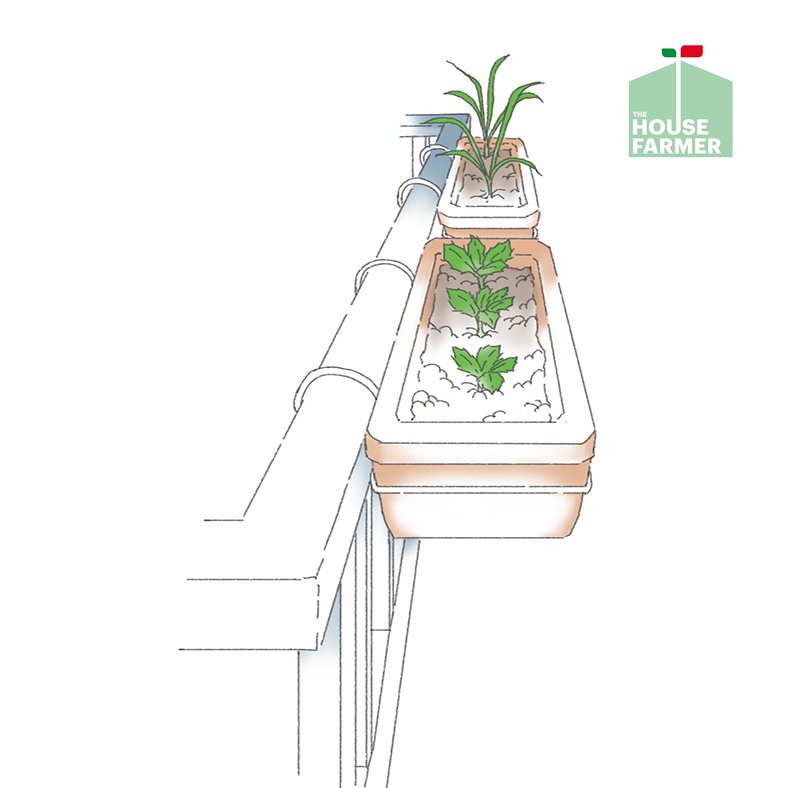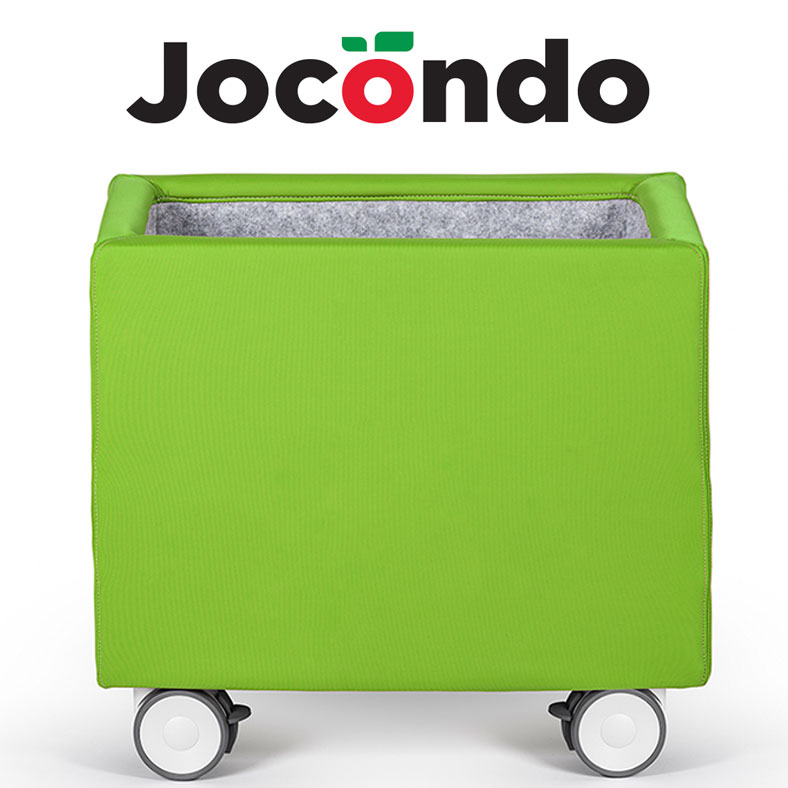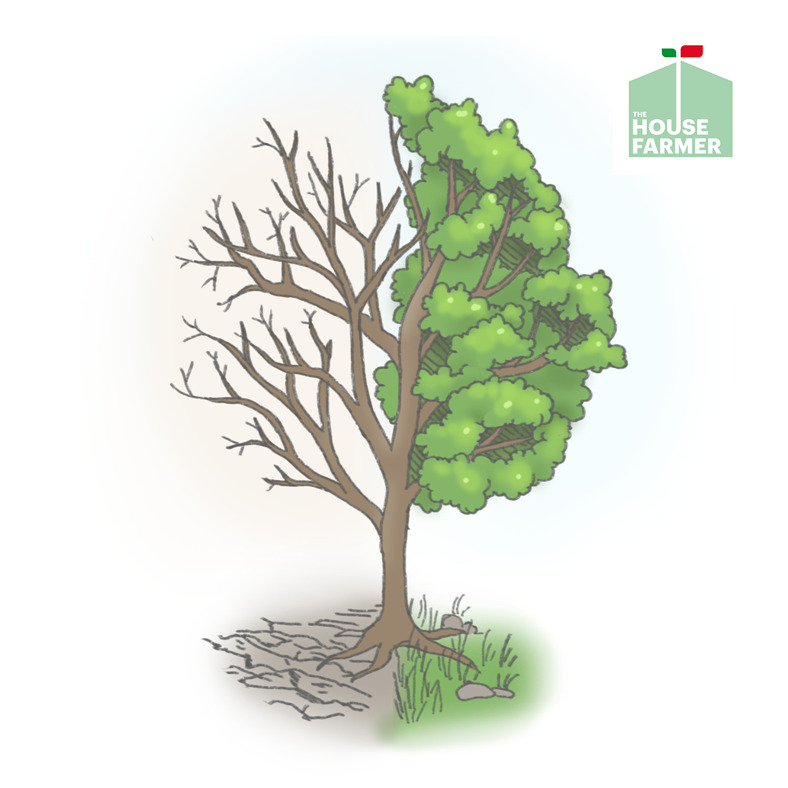
Grow salad greens on balcony - #meandgrandma5
It is really great to grow salad greens on balcony! My terrace garden provides me with vegetables nearly every season, and I very rarely need to buy them, especially in summer. My grandma would say that if you want something done, it is best to do it yourself and I did my best to find as many varieties of veg to plant on my balcony. I advise anybody living in a condo to give it a try, I find it extremely gratifying.
Let’s start with a classic. Grow salad greens on balcony.
Salads are made up of 95% water and are rich in vitamins (A,B,C,E) and in minerals such as magnesium, iron phosphorus, calcium and potassium. All this with just 15 Kcal per 100 grams.
Their roots are shallow and they tolerate small, narrow spaces. They grow quickly and display a truly unexpected range of colours. Many varieties are robust enough to be grown even in winter. They can be placed in small pots and consumed very tender, or in containers up to 30 cm in diametre if you want to obtain a more mature crop or grow different varieties together. A 30 cm diameter pot will hold five.
They are sown indoors in early spring and then moved out in early summer when they can also be sown in the open.
By sowing progressively, you will always have a supply: from early March to the end of June, and then by sowing again in September your last harvest will be
between October and November. Many varieties of salad take approx. 35 – 50 days to go from the seed to the table. This means if you sow in March you can harvest the first crop mid/late April, if you sow in April you will be harvesting salad mid-May and son on.
Some qualities take up to 90 days from sowing and are not suitable for growing in pots.
It is advisable to start sowing in small pots and then transplant them leaving a 5-10 cm distance. They should be transplanted when they have six leaves. It is essential you water them regularly and maintain the soil humid. You can pick the leaves using scissors, shears or with your hands, starting from the outer area of the plant and leaving the central part intact so as not to interfere with its growth. By so doing you will be able to enjoy eating leaves from the same seedling for weeks.
There are many varieties of salads which are suitable for sowing, and you can choose from a wide assortment of colorful and crunchy types.
Grow salad greens on balcony. From Spring to mid-summer (March – June)
- Red and green oak leaf lettuce – ready to harvest approx. 35 days after sowing. It is bushy with abundant jagged leaves, bright green and red in colour. It grows back surprisingly quick once harvested.
- Green coral lettuce – its has light green leaves with frilly curls and is very tender.
- Red coral lettuce – its curly leaves are a deep red with a sweet flavor.
- Red and green salad bowl – this heat-tolerant rustic salad is very prolific. It has blonde green leaves which are rich in flavor as well as iron and vitamins.
- Butterhead – comes in bright green heads with a darker purply hue around the top of the leaves. It is tender and has a sweet flavor.
- Cocarde – produces and abundance of dark green leaves with reddish hues and looks similar to oakleaf lettuce. It is crunchy and tasty.
From mid-summer to mid-autumn (August – September)
- Red sails – rich in vitamins A and C, it has ruffled, fringed leaves of deep burgundy red over green.
- Merveilles des Quatre Saisons – The “Marvel of the 4 seasons” is a capuchin lettuce with tightly-knit green reddish-brown leaves.
- Valdor – a bright green capuchin lettuce.
- Gentilina – voluminous head with very tender light green leaves.
- Ice Queen – a large crisphead with intense green leaves, at the same tender and crunchy.
Rocket
When it comes to grow salad greens on a balcony vegetable garden, rocket, also called arugula, is a separate matter! It comes in two varieties. I prefer the wild one, a perennial plant which can be distinguished from the cultivated variety by its small yellow flowers. Its roots remain in the pot for several years while the outer part dries out in winter and reappears in spring. The cultivated variety on the other hand needs to be planted every spring. It also has a less spicy and intense flavor.
Rocket can be easily grown on a balcony because its roots are very shallow and it does not require a deep pot. A 20 cm container is already enough to guarantee good results. Obviously the greater the pot, the larger the root system will be and consequently the leaves.
Rocket salad is a fairly rustic and adaptable green. Io prefer to sow it rather than buying the plant. By sowing it you obtain many more strains. What’s more seeds are intelligent! If climate conditions are not favourable they will not sprout. If you sow in February but temperatures suddenly drop, they will wait till March to germinate. Plants on the other hand will die if the weather is too cold, or they will become weak. Therefore, I sow in February and can continue throughout the summer until August if I want. To sow use a well irrigated and rather wide pot; spread the seeds onto the surface in a uniform manner trying not to pile too many in a single spot. Finally, cover with a very light layer of dry soil. It will take just a few days for the seeds to germinate. As it is a leafy green avoid overhead watering to prevent mold and other diseases. It can be harvested approx. 45 days after sowing. If you sow at the end of February/beginning of March you can harvest in Spring and go on harvesting until October by sowing in late summer.
I pick it one leaf at a time, remembering to check under them for the presence of snails or parasites.
After three or four cycles of harvesting (at one month intervals) the strains of rocket, now aged, will throw out stems with little yellow flowers at the end. Meanwhile they will have developed lateral shoots and turned into small creeping branched bushes. The moment has come to cut the plants just above the first two side shoots which will continue to grow new leaves.
Leaf lettuce
Leaf lettuce, with its smooth and curly leaves, does not require much space. It can even be sown at the foot of larger plants, such as eggplant or tomatoes. Care must be taken however to sow it in the outer part of the pot or it will not get enough sun to grow healthy and strong.
It can be grown all year round except from November to February. Like for rocket, scatter the seeds uniformly on the surface of the pot and then cover with a thin layer of soil. The seeds are tiny and during the high summer temperatures it cn take just two or three days for them to sprout. It is very important to water the soil beforehand so that the source of humidity comes from below.
Just like basil, leaf lettuce is a fovorite of the famous Silver-Y caterpillar (also known as Autographa gamma) which devours both gluttonously. The moth readily lays its eggs between the salad and basil leaves. Once they hatch the plants will be covered in voracious green caterpillars. Often their presence is detected only once it is too late, given away by the small black droppings the caterpillars leave on the leaves or around the pots. The insects can be removed manually however you will then need to sow again.
One method that can be used to keep the caterpillars away is to apply a very dense mesh or mosquito net over the pot as protection and to prevent the moth from laying its egg on the lettuce and basil.
To harvest, snip the best leaves with a pair of scissors. Make sure to cut above the crown, the point where new leaves sprout otherwise they will not regrow.
Fresh crispy salads are my true passion, I think you might have guessed that!



